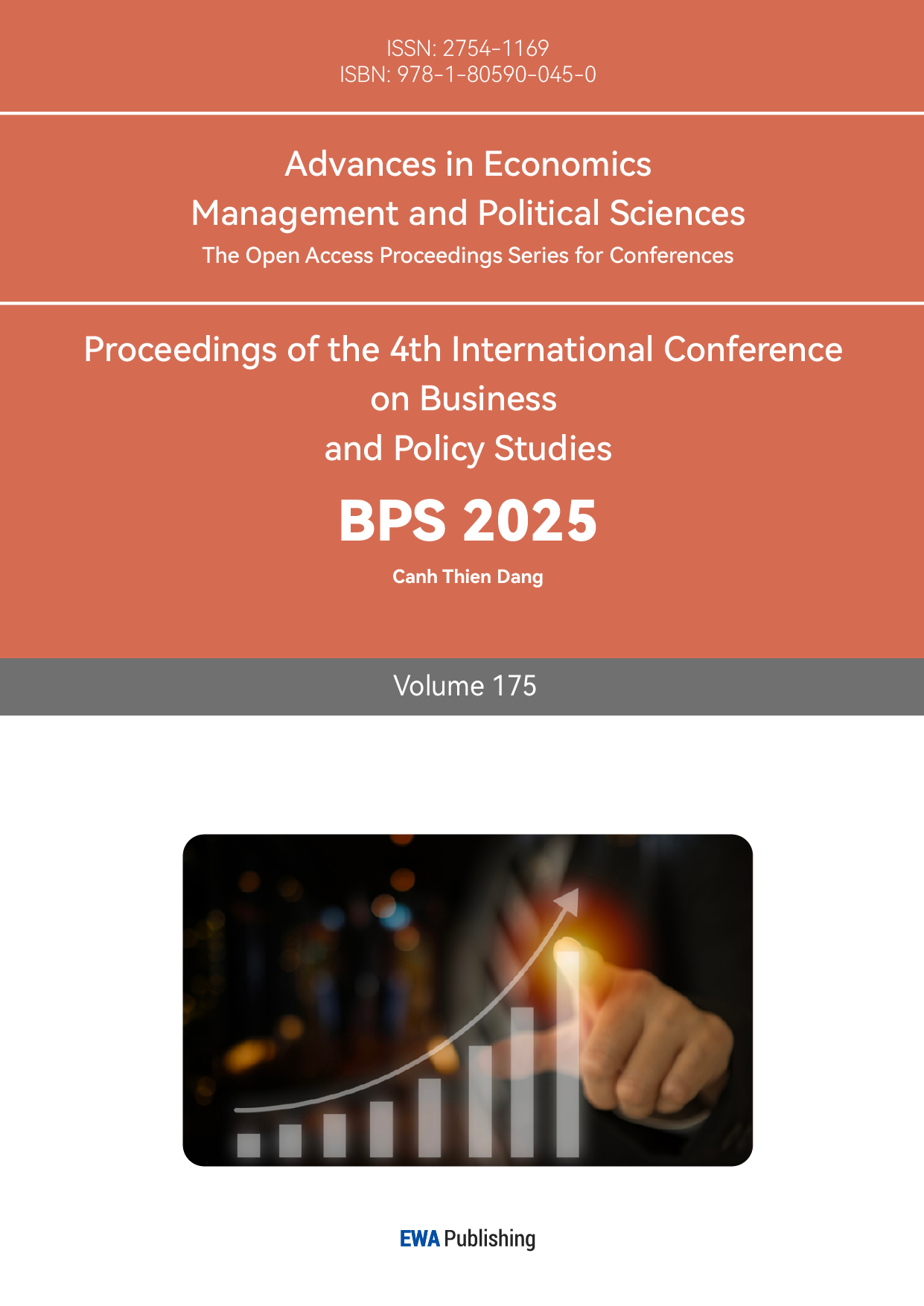1. Introduction
Transboundary pollution challenges necessitate international cooperation, guided by economic and game-theoretic insights. This essay explores how economic tools can help identify when and why countries succeed or fail in collaborating on environmental challenges. Using concepts from game theory and public goods, we examine the factors that encourage cooperation and suggest ways to improve international efforts against pollution. The goal is to find practical solutions that align national interests with global environmental health, highlighting the importance of economic incentives and shared commitments in fostering successful international environmental collaboration.
2. Theory
2.1. Game Theory Prisoner’s Dilemma
In transboundary pollution's "Prisoner's Dilemma," nations choose between cooperating, which leads to a cleaner environment, or defecting, which worsens conditions. While mutual cooperation is optimal, self-interest often prevails, driving countries towards defection and environmental harm. Game theory identifies strategies like fostering repeated interactions to build trust[1] enforcing compliance mechanisms, and promoting shared environmental goals to encourage cooperation. These approaches seek to align individual nation incentives with collective well-being, advocating for a cooperative approach to environmental management that emphasizes long-term stewardship and mutual benefits[2].
2.2. First Section
Dynamic game theory enhances understanding of transboundary pollution management through strategies that evolve over time, such as tit-for-tat and trigger strategies, facilitating sustained cooperation. The Folk Theorem posits that for cooperation to be stable, players must sufficiently value future outcomes, promoting agreements where long-term environmental gains are prioritized over short-term individual advantages. This theorem aids in crafting environmental treaties with effective monitoring and verification, essential for enduring cooperation and compliance. Such strategic frameworks underscore the necessity of considering future interactions in environmental policy-making, ensuring that cooperative strategies are robust and beneficial in the long term [3]. Cooperation can be stable, formalized by the inequality:
\( δ≥\frac{c}{b+c} \)
δ: discount factor
c: cost of cooperation
b: benefit from another's cooperation
This suggests that when players are patient, the long-term gains from cooperation outweigh the short-term incentives to defect.
2.3. Public Goods Game: Contribution to Collective Action
The utility of a player \( i \) deciding how much to contribute \( ({c_{i}}) \) to a public good with n players can be expressed as:
\( {U_{i}}={Y_{i}} - {c_{i}}+r*Σ_{j=1}^{n}{c_{j}} \)
\( {Y_{i}} \) : initial endowment,
\( {c_{i}}: \) contribution to the public good,
r: return factor of the public good
This model captures the tension between individual contributions and collective benefits, highlighting the free rider problem where individuals might prefer not to contribute \( ({c_{i}}=0) \) while still benefiting from others' contributions [4].
2.4. Free Rider
It is assumed that all participating countries are rational actors that aim to maximize their own utility

Figure 1: The non-cooperative and full-cooperative outcomes
\( {Q_{0}} \) represents the outcome when countries do not fully cooperate, potentially because they are free riding on the pollution reduction efforts of others. \( {Q_{c}} \) represents the optimal pollution reduction from full cooperation, which is challenging to achieve in the presence of free riders.
Figure 1 illustrates the free rider problem in transboundary pollution, where countries might exploit others' efforts in reducing pollution, favoring outcome \( {Q_{0}} \) over the cooperative \( {Q_{c}} \) . This discrepancy occurs because individual benefits ( \( {MB_{i}} \) ) don't reflect the aggregate benefits ( \( MB \) ), leading to suboptimal pollution reduction. Game theory suggests that without proper incentives or enforcement, nations lean towards minimal cooperation, \( {Q_{0}} \) . To mitigate this, international frameworks can introduce mechanisms like sanctions or incentives, aiming to align national interests with global welfare and shift actions towards the optimal \( {Q_{c}} \) , enhancing overall pollution control and fostering sustainable international collaboration.
2.5. The Theory of Externalities
Transboundary pollution represents a classic negative externality, where pollution costs are externalized onto neighboring countries, leading to excessive pollutant production. Economically, this misalignment necessitates international efforts to internalize such costs, ensuring that polluters bear the full economic burden, thus aligning individual and collective interests [5]. International agreements, such as the Paris Agreement, serve to modify incentives, encouraging nations to adopt cooperative strategies for pollution control and align their actions with global environmental objectives, reflecting a shift toward sustainable, shared welfare [6].

Figure 2: Externalities (negative) – Arthur Pigou
Figure 2 illustrates the concept of negative externalities, where the marginal private cost (MPC) of production is less than the marginal social cost (MSC), leading to overproduction (Qp) compared to the socially optimal quantity (Qs).
3. Practical
3.1. Coase Theorem
The Coase Theorem suggests that with clear property rights and low transaction costs, parties can efficiently resolve externalities like transboundary pollution through negotiation[7]. Practically, this could manifest as upstream and downstream countries establishing water quality agreements, possibly with financial incentives to reduce pollution. Critical assumptions include well-defined rights, low negotiation costs, full information, absence of wealth effects, and rational behavior. Tradable pollution permits exemplify this in action, allowing market mechanisms to find cost-effective solutions to environmental challenges.
3.2. Strategic Corporate Social Responsibility in a Game-Theoretic Context
In a game-theoretic framework, CSR is modeled as a strategic choice where firms weigh the costs against potential reputational and financial benefits. According to[8], firms' decisions to engage in CSR can be represented through a utility function:
\( {U_{i}}={π_{i}}({CSR_{i}},{CSR_{j}})-C({CSR_{i}})+β∙R({CSR_{i}},{CSR_{j}}) \)
U: utility for firm i
\( {π_{i}} \) : profit for firm i
\( C({CSR_{i}}) \) : cost of implementing CSR for firm i
\( β \) : factor that translates reputational gains into long-tern financial benefits
\( R({CSR_{i}},{CSR_{j}}) \) : reputational benefit for firm I (depends on both firm CSR strategies)
Illustrating the trade-offs between immediate costs and longer-term gains from enhanced reputation and stakeholder trust. This analysis demonstrates that strategic CSR engagement can be an equilibrium strategy, fostering competitive advantage and societal welfare[9].
3.3. Strengthening International Protocols for Environmental Cooperation
Effective transboundary pollution control requires clear protocols, like the Montreal Protocol's transparent reporting, and robust enforcement mechanisms, as seen in international treaties' compliance committees[10]. The UNFCCC's principle of "common but differentiated responsibilities" further underscores the need for equitable responsibility distribution, promoting fair and efficient global environmental cooperation[11].
3.4. ASEAN Initiatives: A Public Goods Approach to Haze Mitigation
The ASEAN Agreement on Transboundary Haze Pollution[12] applies public goods theory to mitigate the externalities of agricultural haze, benefiting multiple nations. Its success depends on member states' commitment to shared responsibilities and enforcement, addressing the free-rider problem to ensure collective action. This regional collaboration underscores the importance of cooperative efforts in managing environmental challenges and enhancing public health and economic stability across Southeast Asia [12].
3.5. Managing Transboundary Water Pollution
The Danube River's management highlights the economic concept of collective action in addressing transboundary pollution[13]. Nations collaborate through the ICPDR to tackle shared environmental costs, embodying principles of joint utility and mutual benefit. This cooperation reflects a public goods approach, enhancing the river's health and supporting regional economies [14].
4. Conclusion
Lastly, navigating the intricate landscape of transboundary pollution requires a nuanced understanding of both economic theory and international diplomacy. By leveraging game theory and public goods frameworks, we gain valuable perspectives on fostering collaborative efforts that transcend national boundaries. This essay underscores the imperative of aligning economic incentives with environmental stewardship, advocating for strategic cooperation to mitigate the shared burdens of pollution. As McGlade[13] insightfully notes, "effective environmental governance is pivotal in sustaining our shared natural resources," thus, echoing our collective responsibility towards a more harmonious and sustainable future.
References
[1]. Colman, A. M. (2003). Cooperation, psychological game theory, and limitations of rationality in social interaction. Behavioral and Brain Sciences, 26(2), 139-153. https://doi.org/10.1017/S0140525X03000050
[2]. Barrett, S. (2003). Environment and Statecraft: The Strategy of Environmental Treaty-Making. Oxford University Press.
[3]. Fudenberg, D., & Tirole, J. (1991). Game theory. MIT Press.
[4]. Fehr, E., & Gächter, S. (2000). Cooperation and punishment in public goods experiments. American Economic Review, 90(4), 980-994.
[5]. Kolstad, C. D. (2011). Environmental economics. Oxford University Press.
[6]. United Nations Framework Convention on Climate Change (UNFCCC). (2015a). Paris Agreement. United Nations.
[7]. Coase, R. H. (1960). The problem of social cost. The Journal of Law & Economics, 3, 1-44. The University of Chicago Press. http://www.jstor.com/stable/724810
[8]. Sacconi, L., & Degli Antoni, G. (2011). A theoretical analysis of the relationship between social capital and corporate social responsibility: Concepts and definitions. In Social Capital, Corporate Social Responsibility, Economic Behaviour and Performance (pp. 417-435). Palgrave Macmillan.
[9]. Bénabou, R., & Tirole, J. (2010). Individual and corporate social responsibility. Economica, 77(305), 1-19.
[10]. Bodansky, D. (2001). The history of the global climate change regime. In International relations and global climate change (pp. 23-40).
[11]. United Nations Framework Convention on Climate Change (UNFCCC). (2015b). Paris Agreement. United Nations Framework Convention on Climate Change.
[12]. ASEAN. (2002). ASEAN Agreement on Transboundary Haze Pollution. Association of Southeast Asian Nations. https://asean.org/?static_post=asean-agreement-on-transboundary-haze-pollution-2
[13]. McGlade, J. M. (2002). Governance of transboundary pollution in the Danube River. Aquatic
[14]. ICPDR. (2021). Danube River Basin Management Plan. International Commission for the Protection of the Danube River.
Cite this article
Tan,H.W. (2025). Navigating Transboundary Pollution: Economic and Game-Theoretic Approaches to International Environmental Cooperation. Advances in Economics, Management and Political Sciences,175,64-68.
Data availability
The datasets used and/or analyzed during the current study will be available from the authors upon reasonable request.
Disclaimer/Publisher's Note
The statements, opinions and data contained in all publications are solely those of the individual author(s) and contributor(s) and not of EWA Publishing and/or the editor(s). EWA Publishing and/or the editor(s) disclaim responsibility for any injury to people or property resulting from any ideas, methods, instructions or products referred to in the content.
About volume
Volume title: Proceedings of the 4th International Conference on Business and Policy Studies
© 2024 by the author(s). Licensee EWA Publishing, Oxford, UK. This article is an open access article distributed under the terms and
conditions of the Creative Commons Attribution (CC BY) license. Authors who
publish this series agree to the following terms:
1. Authors retain copyright and grant the series right of first publication with the work simultaneously licensed under a Creative Commons
Attribution License that allows others to share the work with an acknowledgment of the work's authorship and initial publication in this
series.
2. Authors are able to enter into separate, additional contractual arrangements for the non-exclusive distribution of the series's published
version of the work (e.g., post it to an institutional repository or publish it in a book), with an acknowledgment of its initial
publication in this series.
3. Authors are permitted and encouraged to post their work online (e.g., in institutional repositories or on their website) prior to and
during the submission process, as it can lead to productive exchanges, as well as earlier and greater citation of published work (See
Open access policy for details).
References
[1]. Colman, A. M. (2003). Cooperation, psychological game theory, and limitations of rationality in social interaction. Behavioral and Brain Sciences, 26(2), 139-153. https://doi.org/10.1017/S0140525X03000050
[2]. Barrett, S. (2003). Environment and Statecraft: The Strategy of Environmental Treaty-Making. Oxford University Press.
[3]. Fudenberg, D., & Tirole, J. (1991). Game theory. MIT Press.
[4]. Fehr, E., & Gächter, S. (2000). Cooperation and punishment in public goods experiments. American Economic Review, 90(4), 980-994.
[5]. Kolstad, C. D. (2011). Environmental economics. Oxford University Press.
[6]. United Nations Framework Convention on Climate Change (UNFCCC). (2015a). Paris Agreement. United Nations.
[7]. Coase, R. H. (1960). The problem of social cost. The Journal of Law & Economics, 3, 1-44. The University of Chicago Press. http://www.jstor.com/stable/724810
[8]. Sacconi, L., & Degli Antoni, G. (2011). A theoretical analysis of the relationship between social capital and corporate social responsibility: Concepts and definitions. In Social Capital, Corporate Social Responsibility, Economic Behaviour and Performance (pp. 417-435). Palgrave Macmillan.
[9]. Bénabou, R., & Tirole, J. (2010). Individual and corporate social responsibility. Economica, 77(305), 1-19.
[10]. Bodansky, D. (2001). The history of the global climate change regime. In International relations and global climate change (pp. 23-40).
[11]. United Nations Framework Convention on Climate Change (UNFCCC). (2015b). Paris Agreement. United Nations Framework Convention on Climate Change.
[12]. ASEAN. (2002). ASEAN Agreement on Transboundary Haze Pollution. Association of Southeast Asian Nations. https://asean.org/?static_post=asean-agreement-on-transboundary-haze-pollution-2
[13]. McGlade, J. M. (2002). Governance of transboundary pollution in the Danube River. Aquatic
[14]. ICPDR. (2021). Danube River Basin Management Plan. International Commission for the Protection of the Danube River.









